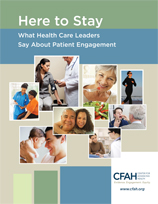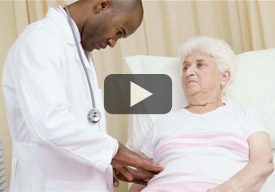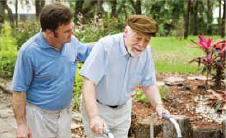Patient Engagement: Here to Stay
| July 1, 2014

A few years after my treatment for Hodgkin’s lymphoma finally limped to its end in the mid-1970s, I looked back and was amazed at my casual approach to that devastating, life-changing diagnosis. At times I had been completely absorbed by it, every moment governed by the demands of the treatment and illness. At other times, well, the contingencies of life intervened, and I went dancing. Or to class. Or on vacation, with little regard for the risks, the medications and all my doctors' directives.
How could this be? Why would I take such a chance with my own health, my own survival?
These questions have driven my career, fortified by additional diagnoses of cancer and the everyday drudgery of caring for illnesses and side effects. Over that time, I have become increasingly impressed with the responsibilities for my self-care that have accumulated along with amazing advances in medicine that have kept me whole. I have also been amazed at the complexity and range of those responsibilities and am deeply concerned about the assumption that all of us can fulfill them – indeed, must fulfill them – in order to realize the full benefits of the care that is now available to us.
My career interest has been on the behavioral and social aspects of illness: exploring the roles each of us must play in keeping ourselves healthy and making use of health care. Why do we do it or not? How do we know how to do it? What must we actually have to do? What is the evidence supporting this? What can be done to increase the likelihood we will take action? And so on.
So, in the early 1990's, when "patient engagement" and "patients as consumers" began to find a place among the concerns of some professionals devoted to improving health care, I was delighted at the sheer notion that this old-fashioned assumption – that all patients are passive zombies – might finally fade and that a new vision for our role in our health and health care would better meet the demands we face.
And it has been a great ride as different health care stakeholders have come to see that their own aims for health care simply can't be achieved without the active, knowledgeable participation of patients and families. One consequence of the piling on of interest among so many different groups (doctors, nurses, administrators, allied health professionals, consultants, health plans, employers, etc.) is that defining patient engagement and what it takes to accomplish has often been hijacked by the language and concerns of any given group. Multiple players sometimes lead to confusion and frustration for those working on the larger aim of increasing the able participation of people in their health and health care.
Hence this new report: Here to Stay: What Health Care Leaders Say About Patient Engagement. We at the Center for Advancing Health stood back – after hearing just one too many times that "patient engagement is a meaningless buzzword" – and decided that while the activities purported to be about engaging patients were indeed a diverse bag of tricks, it was by no means a meaningless concept. So with the support of the Robert Wood Johnson Foundation, we set out to explore patient engagement as it was viewed by various diverse stakeholders.
The findings are hardly surprising, but the unity of opinion, despite the range of unique stakeholder aims, is impressive. I encourage you to dip into the report to view the common themes, but also to browse among the rich interviews given by your colleagues who share your concerns but not necessarily your worldview on this topic.
I am heartened by what I read. There have been times when I truly feared that patient engagement would, like a number of other good ideas (e.g., chronic disease management), fall out of favor and retain only a shadow of its promise as a critically important strategy for change in health and health care.
As a person long concerned with this practical and policy priority, the level of commitment to actually making progress I read in these interviews is exceptional. As a long-time patient, I am profoundly grateful to my colleagues for the creativity, energy and drive they devote to transforming health care delivery into an enterprise that serves us all well.










